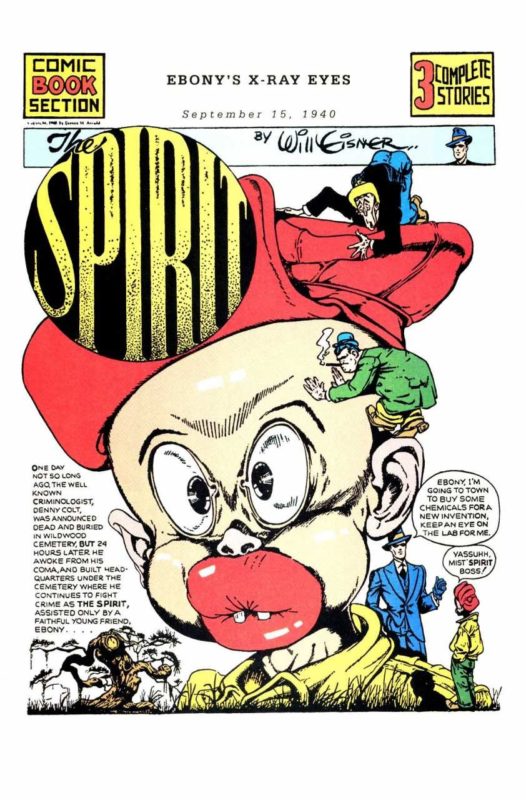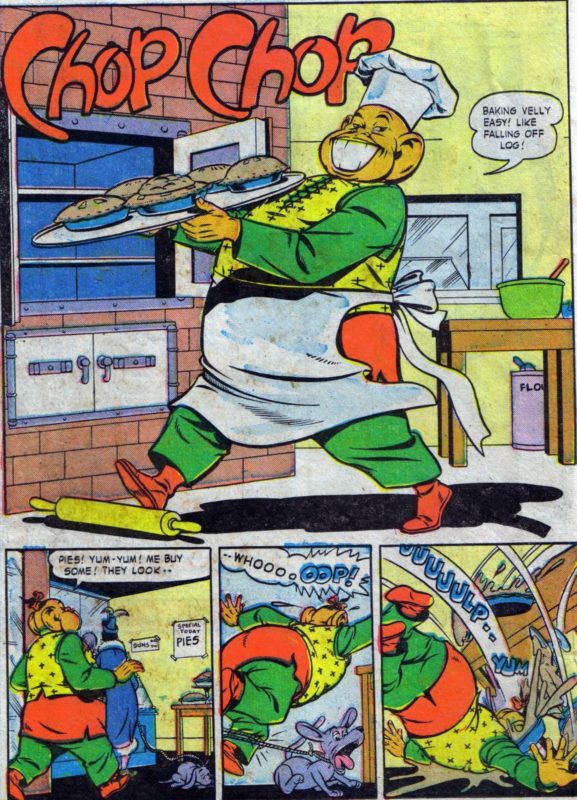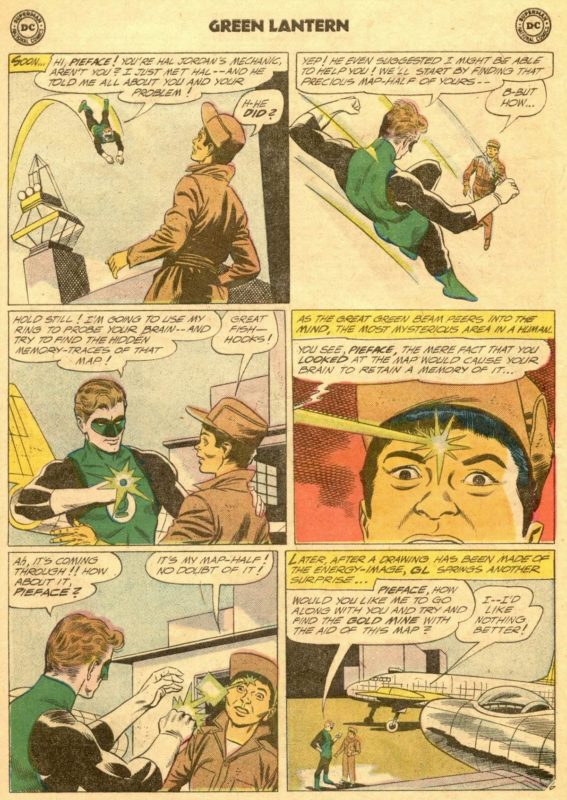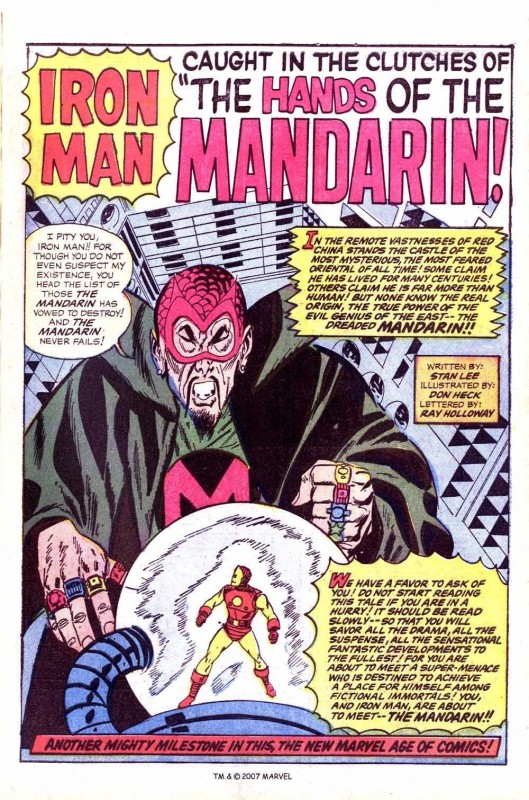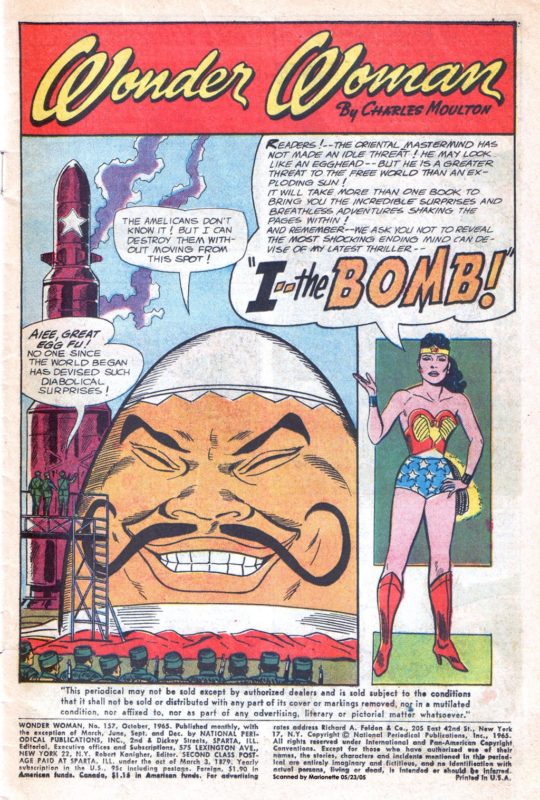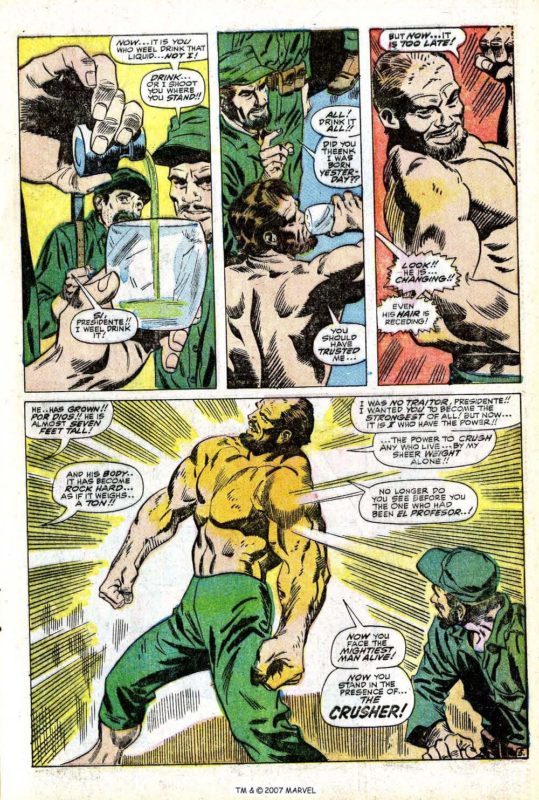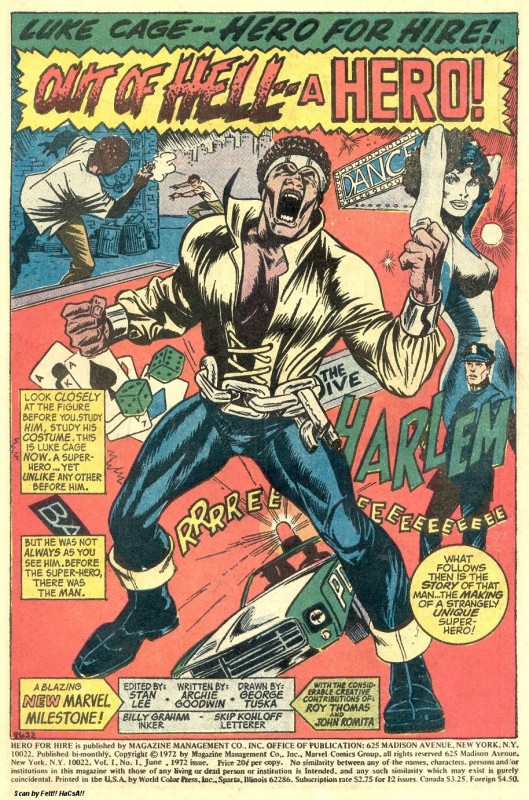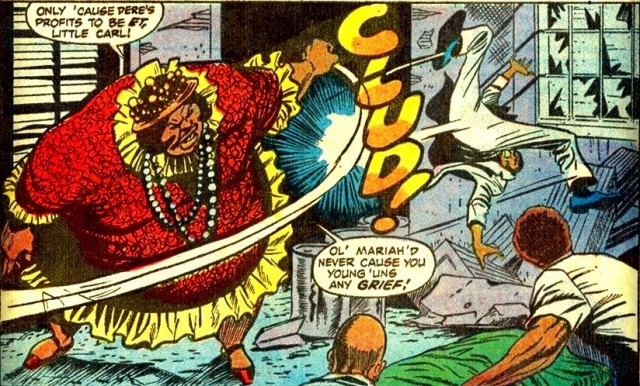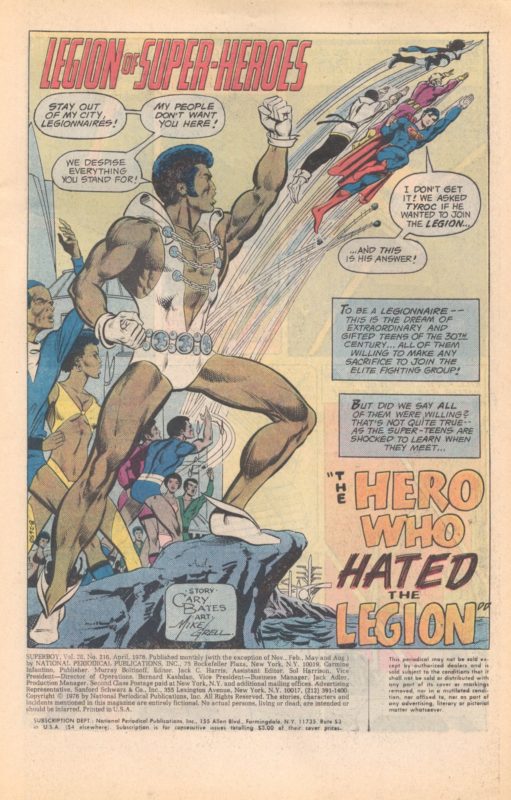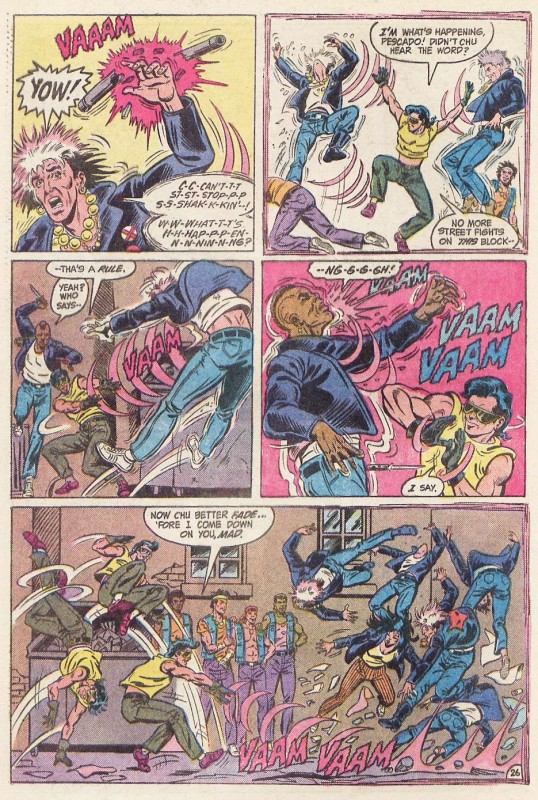Though today there’s an ever-increasing number of minority superheroes, for much of the history of the genre minorities were either ignored, excluded or depicted as two-dimensional stereotypes. Many of these characters have mercifully been forgotten, but some have survived to the modern day, transforming over the decades into more politically-correct versions. These 10 characters are grim reminders of the less-than-perfect history of superhero comics.
10. Ebony White
First Appearance: The Spirit Newspaper Strip (June 2, 1940)
Will Eisner’s The Spirit was a seminal series in the history of American sequential art. Running from 1940 to 1952, it followed the eponymous masked vigilante who operated out of a graveyard and solved crimes. Despite how ground-breaking the series was it’s also remembered for the character of Ebony White, the Spirit’s young black sidekick. His design was grossly exaggerated and offensive: bloated pink lips swallowed over two-thirds of his lower face, his eyes were always giant and wide like dinner plates, his body and features were bulbous and cartoonishly proportioned compared to the more realistic designs of the white characters and his speech patterns were ripped straight from a minstrel show.
Curiously, Ebony was actually a full partner to the Spirit, proving himself to be both a competent fighter in a pinch and an astute detective in his own right. When asked about his depiction of Ebony in an interview for Comic Book Artist in 1999, Eisner said, “I was never apologetic for the way I depicted Ebony… Remember, Ebony was created in the ’40s and, at that time, you still had Amos & Andy. That sort of humor was prevalent and acceptable at the time–but I always treated Ebony very differently. As a matter of fact, I received very good mail; even in the Warren books you’ll see some supportive letters.”
9. Chop-Chop
First Appearance: Military Comics #3 (October 1941)
The Blackhawks were a squadron of World War II-era pilots from different national backgrounds that teamed up to fight evil wherever it raised its ugly head. Though it was primarily a military comic with an eye for (relatively) realistic art, in 1941 it introduced a grotesque comedic relief character known as “Chop-Chop,” a Chinese citizen who became their cook and de facto mascot. Short, fat, yellow-skinned and sporting a queue, Chop-Chop spoke in heavily broken English, a fact made even more offensive by the inclusion of other Asian characters who spoke in perfect English.
Over the years his character evolved from being the Blackhawks’ cook to becoming an ace pilot and equal member of the team. The series was revamped and relaunched several times over the decades, and almost every time Chop-Chop’s portrayal became more and more politically correct. There were hiccups in this progression though, such as in the 1967 DC Comics series where he was re-introduced as “Dr. Hands,” a martial arts expert with beryllium-encased hands.
8. Thomas Kalmaku
First Appearance: Green Lantern Vol. 2, #2 (October 1960)
Thomas Kalmaku is a perfect example of how a single word can damn even the best of intentions. A mechanic working for Ferris Aircraft, Thomas developed a fast friendship with test pilot Hal Jordan. Before long he discovered Hal’s greatest secret: he was really the Green Lantern. As one of the only people in the world who knew his true identity, Thomas wasn’t so much a sidekick as a partner and confidant. But here’s the problem: he was also an Inuit. And for all of Thomas’ confidence and agency as a character, he was nicknamed “Pieface.”
Combined with his stark yellow skin, the nickname served to demarcate Thomas as an ethnic “other” who languished in the shadow of Jordan’s Green Lantern. Future versions of the character would address the nickname, perhaps most notably in the limited miniseries DC: The New Frontier, where Thomas angrily rejects the title the first time Hal calls him it.
7. The Mandarin
First Appearance: Tales of Suspense #50 (February 1964)
Fresh from his appearance in Shane Black’s Iron Man 3, the Mandarin continues his reign as one of Tony Stark’s greatest enemies. But as his name suggests, he wasn’t always the most politically correct of characters. Originally appearing the same year the Chinese government successfully tested their first nuclear bomb, the Mandarin was a throwback to the era of the Yellow Peril. He had a Fu Manchu mustache, perpetually squinted eyes, long fingernails, a colorful assortment of rings (from which he gained his powers), and a mastery of karate. The Mandarin was also a megalomaniac who fought for himself and not his country. In his first appearance he angrily dismissed representatives from the Chinese government who asked him to share the secrets of his technological prowess.
6. Egg Fu
First Appearance: Wonder Woman #157 (October 1965)
Continuing on with the Yellow Peril, DC Comics had their own homegrown 1960s Chinese villain. Somehow their xenophobic creation was both more absurd and more offensive than the Mandarin — his name was Egg Fu, and he was literally a gigantic yellow egg with slitted eyes, a toothy grin and a prehensile Fu Manchu mustache that could grab and throw his enemies. Unlike the Mandarin, Egg Fu was very much a servant of Communist China. In his first appearance he sought to destroy America’s Pacific fleet first with a Doomsday Rocket (which he pronounced as “Doomsday Locket”) and then by transforming Wonder Woman’s all-American sweetheart Steve Trevor into a living atom bomb. As one of Egg Fu’s henchman gleefully chuckles to himself, “Soon [the Americans] will be eating lychee nuts instead of hot dogs.”
5. Crusher
First Appearance: Tales of Suspense #91 (July 1967)
Caldwell Rozza was originally a scientist working for Fidel Castro who sought to create a super-human serum that could transform the dictator into a super-powered being. But, fearing treachery, Castro forced Rozza to ingest his experimental serum when he had finished it. The serum transformed him into the Crusher, a globular hulk of a man who weighted almost a thousand pounds. The Crusher was an extension of the comic’s racist depiction of Cubans: they were scruffy, scheming, untrustworthy and violent. Take, for example, how Castro ordered his soldiers to kill Rozza after he transformed into the Crusher: “None must live who are more powerful than I!!”
4. Luke Cage
First Appearance: Luke Cage, Hero For Hire #1 (June 1972)
Luke Cage is one of the most prominent African-American superheroes. In recent years he’s become one of Marvel’s A-listers, even leading the New Avengers in the wake of Marvel’s massive crossover event Civil War. Armed with super-strength and nearly invincible skin, Luke Cage spent many years as a street hero fighting crime in the unsavory parts of New York City. But see if you can identify the problem here: originally an ex-con given superpowers while in prison, he broke out, traveled to New York City and set up a business where he would only help people if they paid him a fee. He wore a Jheri curl, a silver tiara and a giant chain as a belt. Did we mention that his dialogue was modeled after blaxploitation movies? Or that he was created by two white men?
3. Black Mariah
First Appearance: Luke Cage, Hero for Hire #5 (January 1973)
No matter how hilariously ill-conceived Luke Cage’s design and modus operandi were, they didn’t hold a candle to one of the first reoccurring super-villains he came up against, Black Mariah. If the name didn’t give it away, Mariah was a few steps away from being a full-blown minstrel show mammy: grotesquely overweight, freakishly strong and dressed in a hideous floral muumuu. When Luke Cage first fought her she was the leader of a group of criminals who operated an illegal ambulance that snatched up dead bodies to rob them of their valuables. After being defeated, Black Mariah started a new business venture: drug dealing. Perhaps it’s for the best that she’s only made one official appearance in Marvel continuity since 1982.
2. Tyroc
First Appearance: Superboy #216 (April 1976)
In a move bemoaned by legendary comic book creator Mike Grell as “possibly the most racist concept I’ve ever heard in my life,” DC Comics made the very first black member of their legendary Legion of Super-Heroes a racial separatist who lived on an island in the middle of the ocean with other black people who hated the outside world. His name was Tyroc, and he was so hated by Grell his unhappy co-creator (who had unsuccessfully tried for years to introduce a dignified black character into the Legion) purposefully gave him a preposterous costume that he described as being part Elvis Presley and part street pimp. So after Superman gives him a lengthy speech about the importance of racial tolerance Tyroc joined the Legion, only to be promptly written off and ignored by many future writers who were either embarrassed by the character or frustrated by the odd nature of his powers (he can warp reality with his scream).
1. Vibe
First Appearance: Justice League of America Annual #2 (October 1984)
When comic book artist extraordinaire George Pérez was working on the DC Comics/Marvel Comics company crossover JLA/Avengers, he was confronted with a dilemma. The series was supposed to cameo every single character who had ever been a part of the teams. This meant he’d have to include Vibe, a Latino superhero from Detroit with the ability to shoot vibratory shock waves. Perez, who was of Puerto Rican descent, hated the character’s racist attitudes and habits (such as his ridiculous accent, his “streetwise” mannerisms, and his rabid jealousy towards anyone who loved his sister) so much that he only featured the character’s legs in a single page as he fell off panel. Perez wasn’t alone in his shunning of Vibe — it would be years before he managed to shed the racist trappings of his creators and become a politically correct character.
